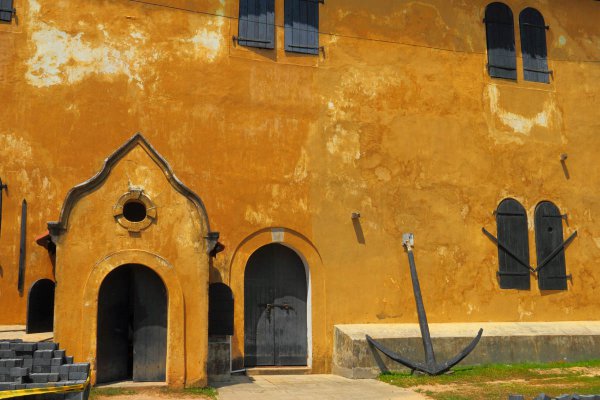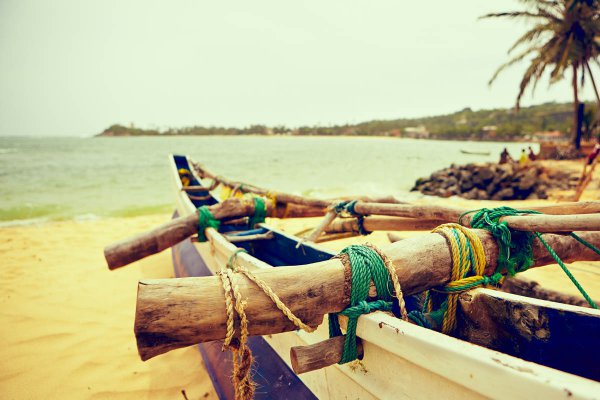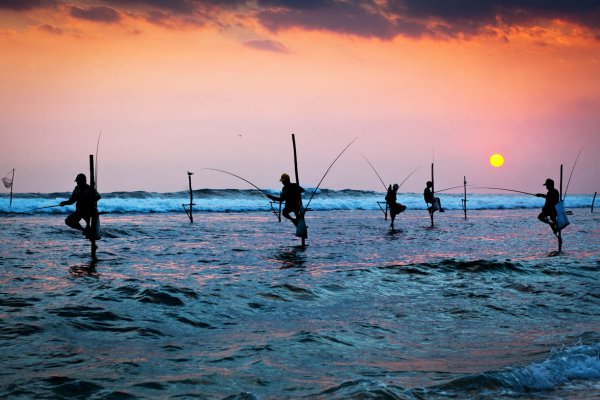The capital of the southern province is a city with a colourful history. UNESCO declared World Heritage Site the magnificent Dutch fort is the most popular attraction of the town. 300 year old Dutch atmosphere is still very much alive around the fort and amidst its many historical buildings not invaded by the skyscrapers. The beautiful beach of Unawatuna is just 6km south east of the city centre.
The southern coastal belt is the most popular among the tourists and comes to life mainly from October through April when the monsoon moves northeast and the sea becomes calm with blue skies. The earliest European administrative centre of Sri Lanka was the major port and the largest city until the British shifted the port to Colombo. The City of Galle had been the European administrative centre over 4 centuries.
Home to an International Cricket Stadium, and 115 km from Colombo, Galle is perhaps one of the most important cities on the South Coast. Now fast acquiring a reputation as the starting point of Sri Lanka’s equivalent to the “Riviera”, the city’s origins are shrouded in legend and mystery. Some believe that it is the Tarshish of the Old Testament, which channelled a thriving trade in exotic luxuries including precious metals and stones, ivory, tropical beasts and of course spices. This whitewashed town has an extremely large fort, built by the Dutch over 400 years ago, as its oldest landmark. A number of important churches are located within the fort, including the Groote Kerk, the oldest Protestant church in Sri Lanka.
A living, breathing city of important historical significance, Galle greets visitors as the gateway to the south. The small promontory that Galle sits upon was a natural haven, and provided safe anchor for Arab merchant vessels plying the ancient sea-lanes connecting the Orient with the Occident. However, it was a Portuguese fleet that “discovered” it by chance in 1505 and observed Arab merchants loading cinnamon and elephants onto their ships. This first landfall by a European maritime power on the island, hastened Galle’s colonial eminence as a shipping and passenger port. Indeed, the event was pivotal in the nation’s history, as it changed the fate of the whole country and an ancient civilization, forever.
Making the circuit of the fort walls is extremely pleasant – especially at dusk. This should take you about two hours, and if you follow the walls clockwise you will eventually come to the Old Gate flanked by two lions and topped by a cockerel, which dates back to 1669. It now houses the National Maritime Museum. The museum is open from 9am to 5pm daily, and has exhibits ranging from pickled sea creatures to fibreglass whales. The Cultural Museum, Groote Kerk (Great Church), Flag rock, the modern Lighthouse, the Bell tower and the old Dutch Government House (reputedly haunted!) are also worth visiting. Old colonial mansions dot the area, well preserved and worth looking over. The Dutch Period Museum is beautifully restored and exhibits the clothes, furniture, jewellery and even the cooking utensils of the Dutch colonial era.
The area is agreeably quiet and easy going, and is famous for exquisite hand-made lace, and gems. Sailing, deep-sea fishing and yachting are very popular here, and on occasion you can even get a crewing position onboard a yacht sailing from Sri Lanka.
The towns has bus and train stations, shops, banks, a post office and communications offices. Accommodation is varied, and ranges from a beautifully restored old lighthouse and villa, to more budget friendly guesthouses.There are plenty of buses and trains at all times of the day, and you can take a ‘tuk tuk’ to the nearby town of Unawatuna for a very reasonable price. Trains from here can also take you to Anuradhapura, Kandy and the seas side town of Matara.
Ancient Harbour
The Portuguese built a small and primitive stockade in Galle in 1594, which became the Fort of St. Cruz in 1625. This fell to the Dutch after a long siege and bloody fighting in 1640. Galle was handed over to the British in 1796, who continued to use it as the chief port for goods and passengers alike. The lovely headland of Galle with its backdrop of gentle hills provided the first sight of Sri Lanka for most travellers coming in for the next 80 years, as it had done for an age before. However, the beauty of the harbour hid the treachery of the rocky shore which during the monsoons made Galle a dangerous port at times. Steamship companies threatened not to call at Galle and demanded a safer haven for their ships. So Sri Lanka’s largest and most important port faded into a backwater as the British built an artificial breakwater at Colombo, which then became the more prominent harbour. Galle still handles some shipping and large yatchs today.
Dutch Fort
Portuguese built the first fort to withstand attack from the Sri Lankan kingdoms to the north. Dutch who captured the coastal cities from the Portuguese improved the defence system of the fort, widening the moat on the landside, improving the ramparts and the bastions. British who captured the city did not make many changes as they shifted the part to the northern town of Colombo and therefore the atmosphere of Dutch days are preserved to date. The Dutch entrance to the fort with it VOC with 1669 carved in the inner archway is still in use. Still there are many old Dutch buildings intact and, but unfortunately except for those in the private hands. The ramparts and the bastions still bring to life the old world.
Dutch Reformed Church
Built by a Dutch Army officer at the site of a previous Portuguese church and completed in 1754 the church is situated close to the new entrance to the fort. The church contains record of marriages since 1748 and baptism from 1678. The other significant of the building id there are no pillars inside the building and the weight of the roof is supported by the walls.
Colonial Architecture
This delightful city offers to the appreciative eye many fine Dutch period buildings including villas, mansions and bungalows all crammed together, their famous tiled roofs jostling each other for space. There are also a few interesting museums and old hotels to visit, while the Groote Kerk or great church, built on a Portuguese convent dating from 1640, is the probably the oldest Protestant church in Sri Lanka. The charming old streets provide lovely, serene walks in contrast to the bustle of the new town just outside.
World Heritage Site
The old town abounds with history and its preservation has to be attributed to its abandonment as the premier port. Most of the old town has remained mercifully intact as the British made few changes. Galle was made a World Heritage Site in 1988, in recognition of the influence it once wielded during a decisive period in the nation’s history and the consequent legacy it has endowed upon her.
Beruwela
58 km or 1 ¼ hours’ drive from Colombo, Beruwela marks the start of the commercial strip of south west coast resorts out of Colombo. This is one of Sri Lanka’s two top tourist destinations, the other being Bentota. The fine beaches here attract most of the visitors to the island, especially towards the end of the year, when the northeast monsoon ensures calmer seas this side of the island. Beruwela is a predominantly Muslim town and boasts the oldest mosque in Sri Lanka, situated on a beautiful headland just out of town. It is believed to have been built at the landing site of the first recorded Muslim settlers and was then known as Barberyn. Thousands of pilgrims flock to the mosque each year for the festival at the end of Ramadan.
Koggala
Hometown of a famous local writer Martin Wickramasinghe. The museum of Folk, Art & Culture built in his honour at his old residence has an excellent display of local folk items. They include the costumes of folk dancers, sports items, household items and furniture and vast arena of the folk life of the early 20th century. Take a boat trip in the lagoon and Kogggala Lake to see many of its small islands, which is a popular destination for bird watching.
Ahangama / Midigama
Home to a unique type of fishing technique. Silt fishing is a popular fishing method in the area and a very beautiful scenery to watch especially during sunset. Ahangama is also a popular surfing location and relatively less crowded than the surfing location to the north.








